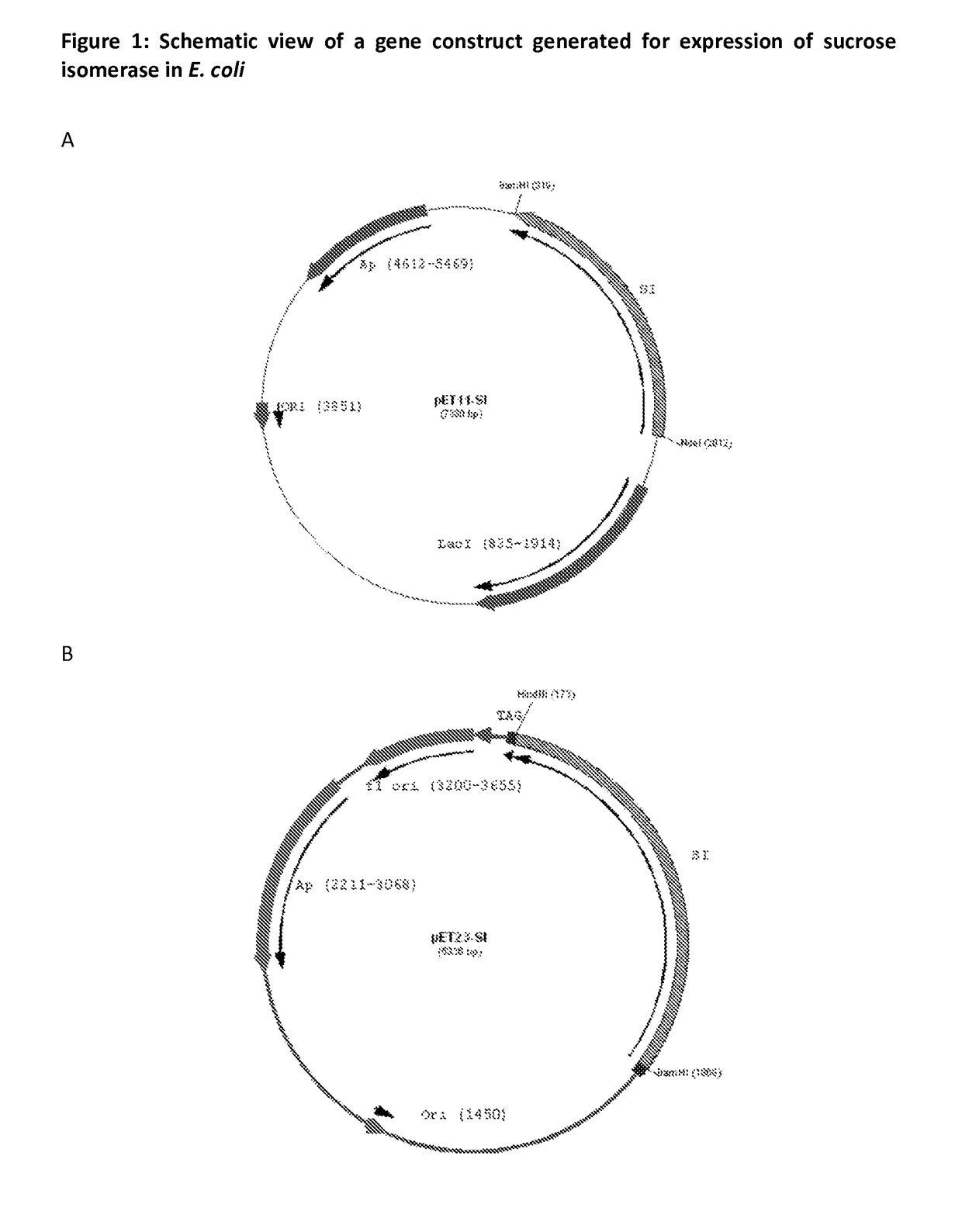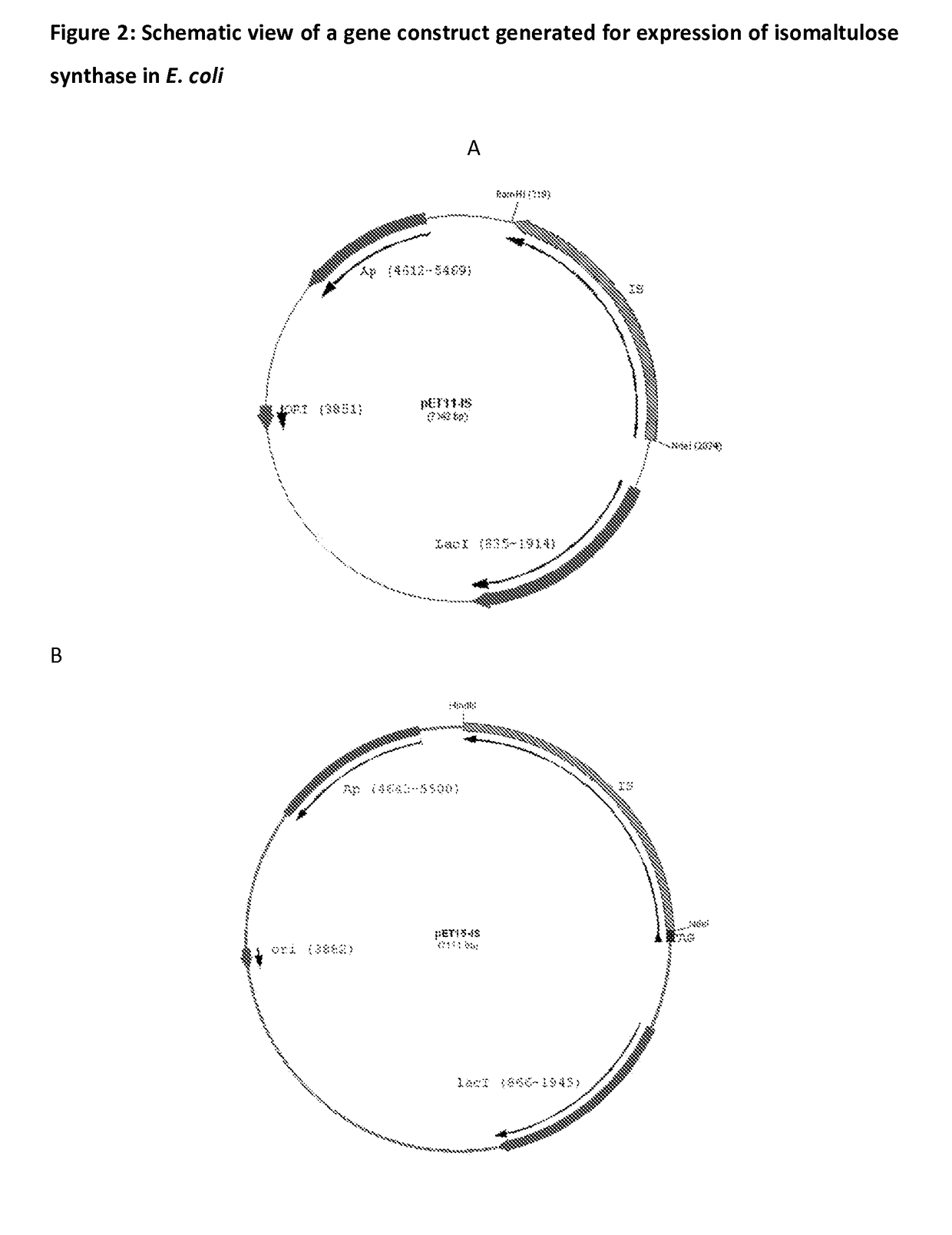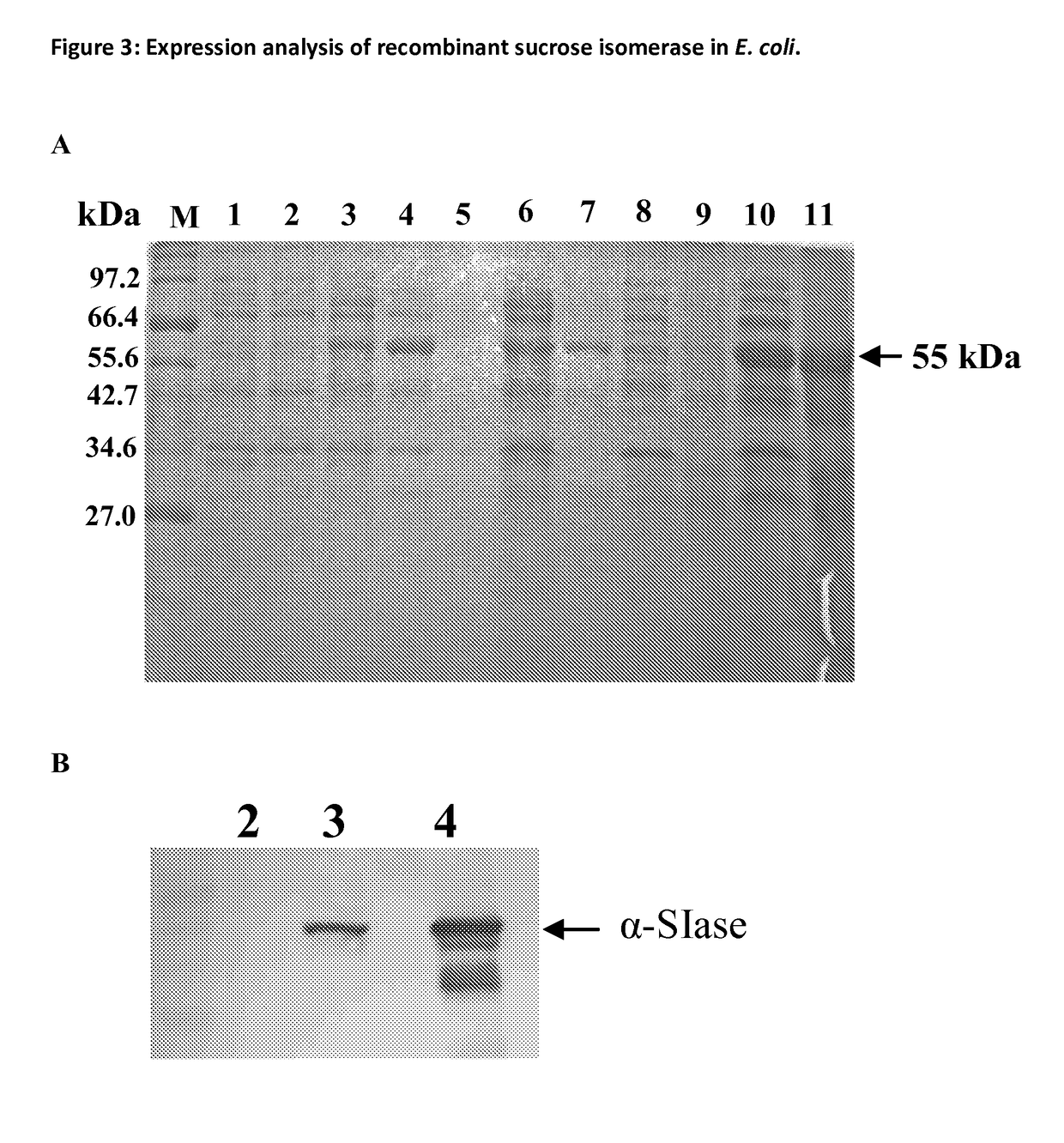Polynucleotide for recombinant expression of isomaltulose synthase
a technology of polynucleotide and isomaltulose, which is applied in the field of biotechnology, can solve the problems of not revealing the expression level of both authors, the production cost of the enzyme due, and the difficulty of achieving the effect of reducing the production cost of the enzym
- Summary
- Abstract
- Description
- Claims
- Application Information
AI Technical Summary
Benefits of technology
Problems solved by technology
Method used
Image
Examples
example 1
Gene Construction
[0063]Gene encoding for sucrose isomerase (SI) was modified for enhanced expression in Escherichia coli was synthesized using gene synthesis approach. The modified gene sequence is represented as SEQ ID NO 1. Similar modification was done to increase the expression of isomaltulose synthase in E. coli as represented in SEQ ID NO 2. Both sequence ID NOs 1 and 2 were cloned in to pUC57 using EcoRV restriction enzyme site to generate pUC57-SI and pUC57-IS constructs. Cloned gene sequence was confirmed by sequence analysis.
[0064]The DNA fragment encoding for sucrose isomerase was PCR amplified using gene specific primers, and sub cloned into pET11a using NdeI and BamHI restriction enzyme sites to generate pET11-SI (FIG. 1A). In addition the coding region was PCR amplified without stop codon using gene specific primers and sub cloned into E. coli expression vector pET23a (FIG. 1B) using BamHI and HindIII restriction enzymes to generate pET23-SI-HIS construct expressing su...
example 2
Development of Recombinant E. coli with Gene Constructs
[0066]Recombinant plasmid DNA (pET11-SI) was transformed into E. coli expression host JM109 by electro transformation method and grown on Luria-Bertani (LB) agar plates containing ampicillin (50 g / ml). Individual colonies were picked and grown on LB liquid or defined media containing ampicillin (75 g / ml) for overnight at 37° C. Overnight culture was re-inoculated into 0.1 OD600 in LB liquid or defined media without ampicillin and grown up to 0.6 OD600 and the cells were induced for protein expression by addition of 0.5 mM of IPTG (Isopropyl β-D-1-thiogalactopyranoside) and incubated at 37° C. An aliquot of E. coli culture was collected at different time points. The cell lysate was subjected to SDS-PAGE and Western blot analysis to verify the protein expression (FIG. 3).
For Isomaltulose Synthase
[0067]Recombinant plasmid DNA (pET11-IS) was transformed into E. coli expression host JM109 by electro transformatio...
example 3
Production of Enzymes, Namely, Sucrose Isomerase and Isomaltulose Synthase
[0068]For large scale production of the above enzymes same protocols were followed. The medium used comprises no components of animal origin. The components of the medium were 4.0 g / L di-ammonium hydrogen phosphate, 13.3 g / L potassium dihydrogen phosphate and 1.7 g / L citric acid, 28 g / L glucose, 1.2 g / L MgSo4.7H2O, 45 mg / L Thiamine HCL, 1 g / L CoCl2.6H2O, 6 g / L MnCl2.4H2O, 0.9 g / L CuSo4.5H2O, 1.2 g / L H3BO3, 0.9 g / L NaMoO4, 13.52 g / L Zn (CH3COO—), 40 g / L Fe-Citrate and 14.1 g / L EDTA. Liquor ammonia was used as an alkali and nitrogen source. The temperature of the fermentation was maintained at 37° C. at a pH 6.9 and oxygen level was maintained not less than 40%, throughout the fermentation. The fermentation process at 2 L scale yields 30-40 g / l biomass.
PUM
| Property | Measurement | Unit |
|---|---|---|
| time | aaaaa | aaaaa |
| pH | aaaaa | aaaaa |
| temperature | aaaaa | aaaaa |
Abstract
Description
Claims
Application Information
 Login to View More
Login to View More - R&D
- Intellectual Property
- Life Sciences
- Materials
- Tech Scout
- Unparalleled Data Quality
- Higher Quality Content
- 60% Fewer Hallucinations
Browse by: Latest US Patents, China's latest patents, Technical Efficacy Thesaurus, Application Domain, Technology Topic, Popular Technical Reports.
© 2025 PatSnap. All rights reserved.Legal|Privacy policy|Modern Slavery Act Transparency Statement|Sitemap|About US| Contact US: help@patsnap.com



